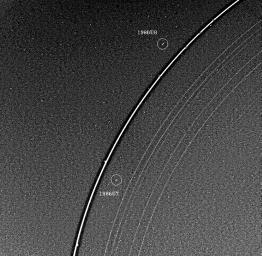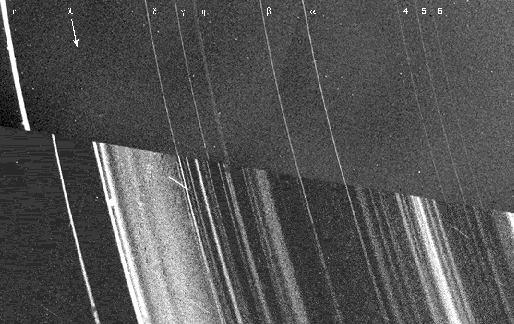| Physics 320 |
Astrophysics I: Lecture #19
|
Prof. Dale E. Gary
NJIT
|
Moons and Rings of the Other Giant Planets
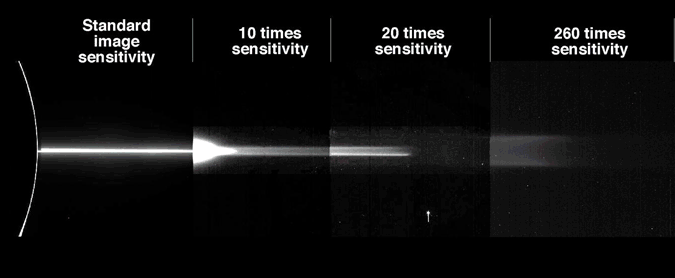
High-sensitivity images
of Jupiter's ring system, including the "Gossamer Ring", overlaid with
the orbital positions of
the moons responsible for
the rings. The main ring is due to particles from Metis and Adrastea,
while the outer parts
of the Gossamer Ring are
due to Amalthea and Thebe. Modified from a figure from NASA's photojournal
web page.
B. Moons
-
Jupiter
(click on the link, then scroll down to satellite list)

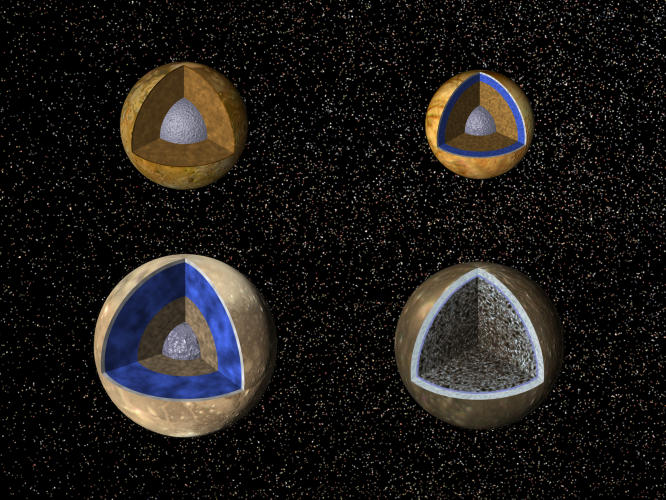
-
Saturn
(click on the link, then scroll down to satellite list)
-
Uranus
(click on the link, then scroll down to satellite list)
-
Neptune
(click on the link, then scroll down to satellite list)
Overview
A visit from an interstellar asteroid
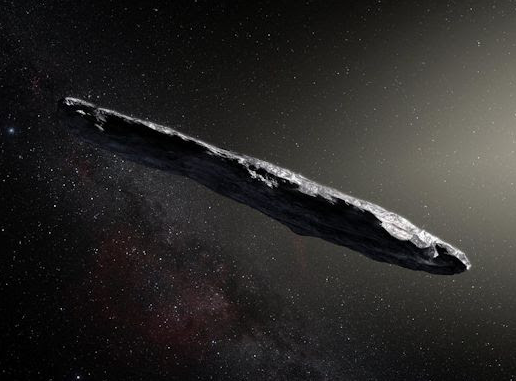 |
| Artist's conception of the first, newly discovered (2017 Oct 19) interstellar asteroid 'Oumuamua'. Credit:
ESO/M. Kornmesser |
The image below shows that there is no coma (no out-gassing of volatile elements) as it neared the Sun, hence it must not be an icy body. That is very interesting, because from the example of our solar system we expect icy bodies ejected into interstellar space to outnumber rocky bodies by 200:1 up to 10000:1. Odd that our first interstellar visitor should be so rare. Note that it was moving very fast when discovered, by the automated system Pan-STARRS1. It is only due to a recent upgrade that such smeared images are followed up, and not discarded.
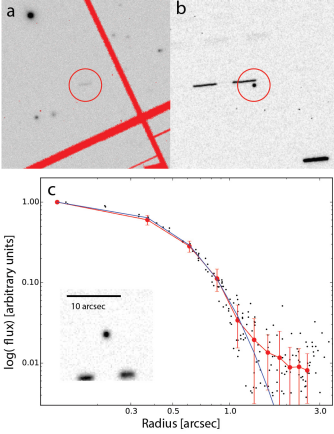 |
| Discovery image and deep image showing no coma. It is an asteroid, and not an icy comet. Meech et al. 2017, Nature. |
We know that this is a visitor from interstellar space, because its orbit is a hyperbola with eccentricity 1.1956+/-0.0006 (100-sigma result). Unfortunately, it was only discovered as it passed Earth on the way out of the solar system. It was only bright enough for discovery for a short time (two weeks), so it was quite lucky that it was discovered at all.
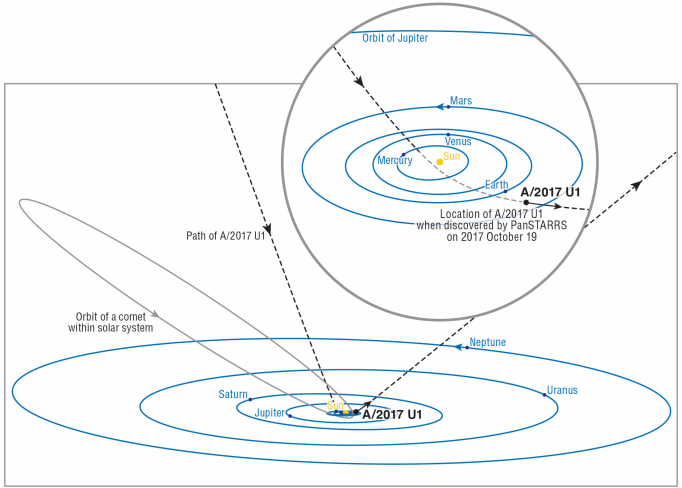 |
| Hyperbolic orbit of the interstellar asteroid. The solid segment shows the part of the orbit where it was bright enough to be studied by large telescopes. Meech et al. 2017, Nature. |
We get its shape from its lightcurve. During those short two weeks, a number of large telescopes were trained on it. The lightcurve below is from observations on Oct. 25, 26 and 27. It has an amazingly deep modulation (> 2 magnitudes), with a period 7.34 hours. It is consistent with a triaxial ratio 10:1:1 (i.e. a cigar shape rotating about one of the short axes). The 20% variation relative to the fitted, dotted line would be due to albedo differences on the surface. An albedo of 0.04 would suggest a size of 800 x 80 x 80 m. The alternative of two separate objects nearly in contact can be rejected, since at the observed rotation rate such objects would have to have an unphysically high density. Even so, it must have a high density and some tensile strength, or else it would fly apart.
 |
| Lightcurve of 'Oumuamua taken on three nights by multiple telescopes. The very deep modulation means the object must be long and skinny, like a cigar, with a triaxial ratio 10:1:1. Meech et al. 2017, Nature. |
The reflectivity spectrum of the object shows it to be very red, similar to D-type asteroids or comets. The Meech et al. Nature paper discusses some other interesting findings about the object. Its trajectory shows that it came in with a three-dimensional velocity remarkably close to the mean motion of stars in the solar neighborhood. This could mean that it came from one of the younger star systems of the galaxy (older star systems have larger velocity dispersion relative to the mean). The fact that after the encounter with the Sun, it is now going in a very different direction, suggests that this is the first close encounter it had with any star since being ejected from a star system. (It cannot be ruled out, though, that it has been wandering the galaxy for billions of years and the low velocity dispersion is by chance). It came from a direction well aligned with the Vega system. The paper says that the travel time from Vega to the Sun is ~600,000 years, and they conclude that it is thus unlikely to be from Vega. I did not understand this conclusion, however.
 |
| Spectral reflectivity of 'Oumuamua, showing that it is consistent with D-type asteroids and comets. Meech et al. 2017, Nature. |
The paper says that "The 'Oumuamua discovery suggests there are likely additional ISOs (interstellar objects) in our solar system at any given time, and raises the tantalizing prospect of many future ISO discoveries." In fact, they estimate that there is always about one ISO of 250 m diameter within 1 AU of the Sun all the time. There could be meteorites from such ISOs on Earth, but because they probably would originate from much younger stellar systems, they would have an age inconsistent with the solar system age (4.5 by). No such objects have been found.

